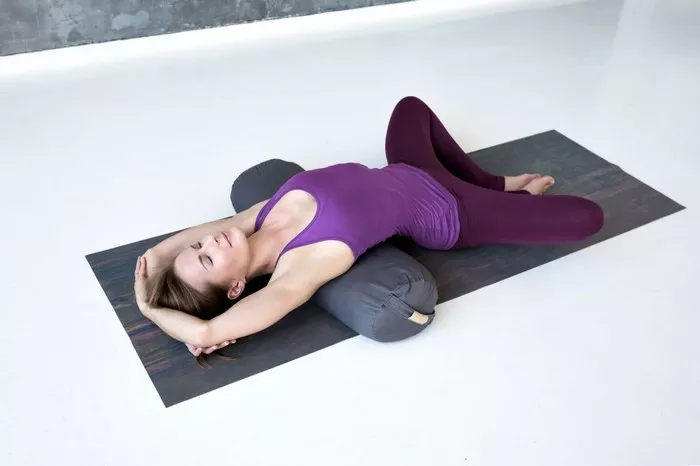Dolphin Pose, or Ardha Pincha Mayurasana, is a staple in many yoga sequences due to its numerous benefits, including enhancing strength, flexibility, and body awareness. While it may seem like just another variation of Downward-Facing Dog (Adho Mukha Svanasana), Dolphin Pose comes with its own set of challenges and rewards. A common question that arises among yoga practitioners is how long they should hold Dolphin Pose for maximum benefits. In this article, we will explore the key factors that determine how long you should hold this pose, the benefits it offers, and tips for making the most out of your practice.
Understanding Dolphin Pose
Before delving into the specifics of how long you should hold Dolphin Pose, it’s essential to understand the posture itself. Dolphin Pose is a variation of Downward-Facing Dog, but instead of placing the hands on the mat, the forearms are positioned on the floor. The body forms an inverted “V” shape, with the hips lifted high and the shoulders pressing downward toward the mat. The head is between the arms, with the crown facing the floor.
The benefits of Dolphin Pose are numerous, and it can be used to build strength in the shoulders, arms, and core while also improving flexibility in the hamstrings and spine. Dolphin Pose is a highly effective way to activate the muscles of the upper body, especially the deltoids and triceps, while simultaneously stretching the lower back and legs.
Key Benefits of Dolphin Pose
To determine how long you should hold Dolphin Pose, it’s important to first understand the benefits you are aiming for. This will help you tailor your practice to meet your specific goals. Here are some of the most significant benefits of Dolphin Pose:
1. Strengthens the Shoulders and Upper Body
Holding Dolphin Pose activates the muscles of the shoulders, arms, and upper back. These muscles are responsible for maintaining the inverted position, supporting the body’s weight as you balance on your forearms. The triceps, deltoids, and rhomboids are all engaged, making this an excellent pose for developing upper body strength.
2. Improves Core Stability
A key aspect of Dolphin Pose is the need to engage your core. As you lift your hips and hold the posture, your abdominal muscles must work to stabilize your spine and prevent you from collapsing. Over time, holding Dolphin Pose helps to develop core strength, which is beneficial not only for yoga but also for other physical activities and everyday movements.
3. Stretches the Hamstrings and Lower Back
In addition to strengthening the upper body, Dolphin Pose also provides a deep stretch for the hamstrings and lower back. The action of pressing the hips upward while keeping the legs straight helps to lengthen the back of the legs, which is especially beneficial for those with tight hamstrings. The stretch in the lower back helps to relieve tension and improve flexibility in the spine.
4. Enhances Balance and Body Awareness
Dolphin Pose requires you to balance your weight between your forearms and legs while keeping the body in alignment. This challenge enhances your sense of body awareness and proprioception, which can help you move more efficiently in both yoga and daily activities. With consistent practice, you will develop a deeper connection between your mind and body.
5. Prepares for Advanced Postures
Dolphin Pose is often used as a preparatory pose for more advanced inversions, such as Headstand (Sirsasana) and Forearm Stand (Pincha Mayurasana). It strengthens the shoulders and core, builds endurance, and teaches you to control your body in an inverted position. Practicing Dolphin Pose regularly can help you build the strength and confidence necessary to progress to these advanced poses.
How Long Should You Hold Dolphin Pose?
Now that we have explored the benefits of Dolphin Pose, let’s address the key question: how long should you hold Dolphin Pose?
The answer depends on several factors, including your experience level, goals, and the context of your practice. Here are some general guidelines to consider:
1. Beginner Practitioners
If you are new to yoga or Dolphin Pose, it is important to listen to your body and avoid overexertion. When you first start practicing Dolphin Pose, aim to hold it for 15 to 30 seconds. This allows you to gradually build strength and flexibility while also focusing on proper alignment.
For beginners, it’s helpful to start with shorter holds and gradually increase the duration as you become more comfortable with the pose. Holding the pose for 15 to 30 seconds is enough to start reaping the benefits without overstraining the muscles, especially in the shoulders and core.
2. Intermediate Practitioners
For those who have been practicing yoga for a while and have developed some level of strength and flexibility, the duration of Dolphin Pose can be extended to 30 to 60 seconds. At this stage, you will likely have more control over your body and can safely hold the pose for longer periods.
Holding Dolphin Pose for up to a minute challenges your muscles to work for a longer duration, which can lead to greater strength and endurance over time. Focus on maintaining steady breathing and proper alignment throughout the hold to maximize the benefits.
3. Advanced Practitioners
Advanced practitioners who have developed significant strength and flexibility can hold Dolphin Pose for 1 to 3 minutes or even longer. Holding the pose for extended periods builds both muscular endurance and mental focus. Advanced practitioners often use Dolphin Pose as part of their warm-up for more challenging postures or as a stand-alone pose in their practice.
However, it’s important to note that holding Dolphin Pose for extended periods requires advanced body awareness. You should maintain focus on keeping the body in alignment and avoid straining or collapsing the shoulders. If you feel any discomfort or tension, it’s essential to come out of the pose and rest before continuing.
4. Context of Your Practice
The length of time you hold Dolphin Pose may also depend on the type of yoga class or sequence you are practicing. For example:
In a Vinyasa Flow: Dolphin Pose is often incorporated into flowing sequences. You may hold the pose for a few breaths before moving on to the next posture. In this context, holds are typically shorter, around 5 to 10 breaths.
In a Hatha Yoga Class: You may hold Dolphin Pose for longer periods of time to deepen the stretch and build strength. Holds of 30 seconds to 1 minute are common in this type of practice.
As Part of a Strengthening Sequence: If you are practicing Dolphin Pose as part of a sequence aimed at building upper body and core strength, you may hold the pose for longer, such as 1 minute or more.
Tips for Holding Dolphin Pose
To ensure that you are holding Dolphin Pose effectively, follow these tips:
1. Focus on Alignment
Proper alignment is crucial when holding Dolphin Pose. Here are some key points to keep in mind:
- Press firmly through your forearms, creating stability in the upper body.
- Keep your hips lifted high and your legs straight, with the heels reaching toward the floor.
- Engage your core muscles to prevent your lower back from collapsing.
- Keep your head relaxed, with the crown of the head facing the floor and the neck aligned with the spine.
2. Breathe Deeply
Breathing is an important aspect of any yoga pose. In Dolphin Pose, focus on deep, steady breaths to help maintain your balance and stay relaxed. Inhale deeply through the nose, allowing the ribs to expand, and exhale fully, releasing tension in the body.
3. Use Modifications as Needed
If holding Dolphin Pose for a prolonged period feels too challenging, you can modify the pose. For example, you can place your knees on the floor to take some weight off your forearms. Alternatively, you can rest in Child’s Pose (Balasana) or Downward-Facing Dog in between holds to release any tension.
4. Practice Regularly
The more frequently you practice Dolphin Pose, the more comfortable you will become holding it for longer durations. Start with shorter holds and gradually increase the time as your strength and flexibility improve. Consistent practice will help you gain the endurance necessary for holding the pose for several minutes.
Conclusion
The amount of time you should hold Dolphin Pose ultimately depends on your individual experience, goals, and the context of your yoga practice. Beginners may start with 15 to 30 seconds, while intermediate and advanced practitioners can extend their hold to 1 to 3 minutes or longer. Regardless of your level, it is important to focus on alignment, breathe deeply, and listen to your body. With regular practice, you will build strength, improve flexibility, and gain greater body awareness, making Dolphin Pose a valuable addition to your yoga routine.
Remember, the key to a successful practice is not the duration of the hold but rather the quality of the posture and the attention you give to your breath and alignment. By practicing Dolphin Pose regularly and thoughtfully, you will unlock its many benefits and continue to grow in your yoga journey.
Related Topics:




















